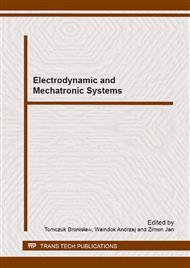p.32
p.40
p.48
p.58
p.67
p.75
p.83
p.94
p.106
Engine Control Unit Testing by Hardware-in-the-Loop Simulation
Abstract:
The article presents simulator of injection-ignition system of internal combustion engine with spark ignition developed at the Technical University of Opole. This system is based on Bosch series engine ECU with software 7.5. It allows to analyze of motor parameters using both on-board diagnostic system, and data network CAN BUS under different operating conditions of the system. For this purpose, the simulator is equipped with a number of additional devices enable to generate repetitive input signals for the ECU, allowing to open the actual working conditions. Crucial for the simulator was to generate the signals informing ECU about the instantaneous position of the crankshaft and camshaft. For this purpose, the module Arduino was used. This type of solution allows, to recreate momentary engine operating conditions. This article also presents the concept of development with new features and sentences feasible for this type of device and simulation mode.
Info:
Periodical:
Pages:
67-74
Citation:
Online since:
February 2014
Authors:
Keywords:
Price:
Сopyright:
© 2014 Trans Tech Publications Ltd. All Rights Reserved
Share:
Citation:


